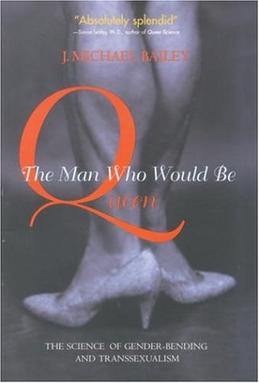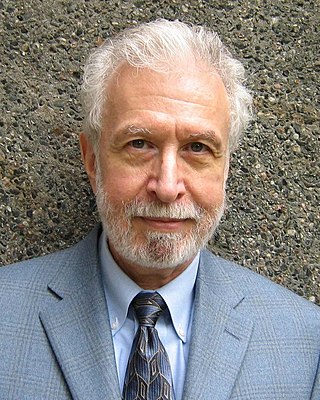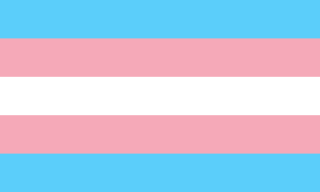Related Research Articles

Transphobia consists of negative attitudes, feelings, or actions towards transgender people or transness in general. Transphobia can include fear, aversion, hatred, violence or anger towards people who do not conform to social gender roles. Transphobia is a type of prejudice and discrimination, similar to racism, sexism, or ableism, and it is closely associated with homophobia. Transgender people of color can experience many different forms of discrimination simultaneously.
The World Professional Association for Transgender Health (WPATH), formerly the Harry Benjamin International Gender Dysphoria Association (HBIGDA), is a professional organization devoted to the understanding and treatment of gender identity and gender dysphoria, and creating standardized treatment for transgender and gender variant people. WPATH was founded in September 1979 by endocrinologist and sexologist Harry Benjamin, with the goal of creating an international community of professionals specializing in treating gender variance.

A trans man is a man who was assigned female at birth. Trans men have a male gender identity, and many trans men undergo medical and social transition to alter their appearance in a way that aligns with their gender identity or alleviates gender dysphoria.

Transfeminism, or trans feminism, is a branch of feminism focused on transgender women and informed by transgender studies. Transfeminism focuses on the effects of transmisogyny and patriarchy on trans women. It is related to the broader field of queer theory. The term was popularized by Emi Koyama in The Transfeminist Manifesto.

The Man Who Would Be Queen: The Science of Gender-Bending and Transsexualism is a 2003 book by the American psychologist J. Michael Bailey, published by Joseph Henry Press.

Androphilia and gynephilia are terms used in behavioral science to describe sexual orientation, as an alternative to a gender binary homosexual and heterosexual conceptualization. Androphilia describes sexual attraction to men and/or masculinity; gynephilia describes the sexual attraction to women and/or femininity. Ambiphilia describes the combination of both androphilia and gynephilia in a given individual, or bisexuality.

Ray Milton Blanchard is an American-Canadian sexologist who researches pedophilia, sexual orientation and gender identity. He has found that men with more older brothers are more likely to be gay than men with fewer older brothers, a phenomenon he attributes to the reaction of the mother's immune system to male fetuses. Blanchard has also published research studies on phallometry and several paraphilias, including autoerotic asphyxia. Blanchard also proposed a typology of transsexualism.
The American-Canadian sexologist Ray Blanchard proposed a psychological typology of gender dysphoria, transsexualism, and fetishistic transvestism in a series of academic papers through the 1980s and 1990s. Building on the work of earlier researchers, including his colleague Kurt Freund, Blanchard categorized trans women into two groups: homosexual transsexuals who are attracted exclusively to men and are feminine in both behavior and appearance; and autogynephilic transsexuals who experience sexual arousal at the idea of having a female body. Blanchard and his supporters argue that the typology explains differences between the two groups in childhood gender nonconformity, sexual orientation, history of sexual fetishism, and age of transition.
Gender incongruence is the state of having a gender identity that does not correspond to one's sex assigned at birth. This is experienced by people who identify as transgender or transsexual, and often results in gender dysphoria. The causes of gender incongruence have been studied for decades.

Sexuality in transgender individuals encompasses all the issues of sexuality of other groups, including establishing a sexual identity, learning to deal with one's sexual needs, and finding a partner, but may be complicated by issues of gender dysphoria, side effects of surgery, physiological and emotional effects of hormone replacement therapy, psychological aspects of expressing sexuality after medical transition, or social aspects of expressing their gender.
The classification of transgender people people into distinct groups has been attempted since the mid-1960s. The most common modern classifications in use are the DSM-5 and ICD, which are mainly used for insurance and administration of gender-affirming care.
Feminizing hormone therapy, also known as transfeminine hormone therapy, is hormone therapy and sex reassignment therapy to change the secondary sex characteristics of transgender people from masculine or androgynous to feminine. It is a common type of transgender hormone therapy and is used to treat transgender women and non-binary transfeminine individuals. Some, in particular intersex people, but also some non-transgender people, take this form of therapy according to their personal needs and preferences.

A transgender person is someone whose gender identity differs from that typically associated with the sex they were assigned at birth. Some transgender people who desire medical assistance to transition from one sex to another identify as transsexual. Transgender is also an umbrella term; in addition to including people whose gender identity is the opposite of their assigned sex, it may also include people who are non-binary or genderqueer. Other definitions of transgender also include people who belong to a third gender, or else conceptualize transgender people as a third gender. The term may also include cross-dressers or drag kings and drag queens in some contexts. The term transgender does not have a universally accepted definition, including among researchers.

A transsexual person is someone who experiences a gender identity that is inconsistent with their assigned sex, and desires to permanently transition to the sex or gender with which they identify, usually seeking medical assistance to help them align their body with their identified sex or gender.
Erotic target location error (ETLE) is a hypothesized dimension for paraphilias, defined by having a sexual preference or strong sexual interest in features that are somewhere other than on one's sexual partners. When one's sexual arousal is based on imagining oneself in another physical form the erotic target is said to be one's self, or erotic target identity inversion (ETII).
Analloeroticism is having no sexual interests in other people. Anil Aggrawal considers it distinct from asexuality and defines the latter as the lack of a sex drive. Analloerotics are unattracted to female or male partners, but not necessarily devoid of all sexual behaviour.
Anne Alexandra Lawrence is an American psychologist, sexologist, and former anesthesiologist who has published extensively on gender incongruence. Lawrence is a transgender woman and transitioned when she was in her 40s.

Alice Domurat Dreger is an American historian, bioethicist, author, and former professor of clinical medical humanities and bioethics at the Feinberg School of Medicine, Northwestern University, in Chicago, Illinois.
Charles Allen Moser is an American physician specializing in transgender health, a clinical sexologist, sex therapist, and sex educator practicing in San Francisco, California. He is the author of numerous academic publications and books in the fields of transgender health, paraphilias including BDSM, and sexual medicine.
The medicalisation of sexuality is the existence and growth of medical authority over sexual experiences and sensations. The medicalisation of sexuality is contributed to by the pharmaceutical industry, along with psychiatry, psychology, and biomedical sciences more generally.
References
- 1 2 3 4 5 6 7 8 9 10 11 12 13 14 15 16 17 18 Anne A. Lawrence (2013). Men Trapped in Men's Bodies: Narratives of Autogynephilic Transsexualism (PDF). Focus on Sexuality Research. Springer Science & Business Media. doi:10.1007/978-1-4614-5182-2. ISBN 978-1-4614-5182-2. OCLC 910979847. Archived from the original (PDF) on 2024-03-23.
- 1 2 3 Lawrence, Anne A. (2007). "Becoming What We Love: Autogynephilic Transsexualism Conceptualized as an Expression of Romantic Love" (PDF). Perspect. Biol. Med. 50 (4): 506–520. doi:10.1353/pbm.2007.0050. PMID 17951885. S2CID 31767722. Archived from the original (PDF) on 2015-02-05. Retrieved 2014-09-22.
- 1 2 Lawrence, Anne A. (2011). "Autogynephilia: An Underappreciated Paraphilia" (PDF). Advances in Psychosomatic Medicine. 31: 135–148. doi:10.1159/000328921. ISBN 978-3-8055-9825-5. ISSN 1662-2855. PMID 22005209. S2CID 16143265. Archived from the original (PDF) on 2020-11-12.
- ↑ Webb, M.A. (2019). A Reflective Guide to Gender Identity Counselling. Jessica Kingsley Publishers. p. 38. ISBN 978-1-78450-733-6 . Retrieved 28 April 2024.
- 1 2 Lawrence, A. A. (1999), "28 narratives about autogynephilia", annelawrence.com, archived from the original on 2000-08-16
- 1 2 Lawrence, A. A. (1999), "31 New Narratives About Autogynephilia: Plus Five Revealing Fantasy Narratives", annelawrence.com, archived from the original on 2000-08-16
- ↑ Lawrence, Anne A. (2004). "Autogynephilia: A Paraphilic Model of Gender Identity Disorder" (PDF). Journal of Gay and Lesbian Psychotherapy. 8 (1/2): 69–87. CiteSeerX 10.1.1.656.9256 . doi:10.1080/19359705.2004.9962367. Archived from the original (PDF) on 2015-09-23. Retrieved 2015-02-10.
- 1 2 Lawrence, Anne A. (2017). "Autogynephilia and the Typology of Male-to-Female Transsexualism" (PDF). European Psychologist. 22 (1): 39–54. doi:10.1027/1016-9040/a000276. ISSN 1016-9040. S2CID 151624961. Archived from the original (PDF) on 2020-02-13.
- 1 2 Anne A. Lawrence (1998), Men Trapped in Men's Bodies: An Introduction to the Concept of Autogynephilia, vol. 1, pp. 65–68, archived from the original on 1999-10-11
- ↑ Bailey JM, Triea K (2007). "What many transgender activists don't want you to know: and why you should know it anyway". Perspect Biol Med. 50 (4): 521–34. doi:10.1353/pbm.2007.0041. PMID 17951886.
- 1 2 Anne Lawrence (1999), "Men Trapped in Men's Bodies: Autogynephilic Eroticism as a Motive for Seeking Sex Reassignment", Presented at the 16th HBIGDA Symposium, London, UK, August 20, 1999, archived from the original on 2000-01-18
- ↑ Lippa, Richard A. (2015). "Men Trapped in Men's Bodies: Narratives of Autogynephilic Transsexualism: By Anne A. Lawrence. New York, Springer, 2013, 242 pp., $129.00 (hardcover), $49.99 (softcover), $39.99 (ebook)". Archives of Sexual Behavior. 44 (5): 1511–1514. doi:10.1007/s10508-015-0553-x. ISSN 0004-0002.
- ↑ Levine, Stephen B. (2014). "What is More Bizarre: The Transsexual or Transsexual Politics?: Men Trapped In Men's Bodies: Narratives of Autogynephilic Transsexualism. By Anne A. Lawrence, New York Springer, 2013. 242 pp. $129 (hardcover). ISBN: 978-1-4614-5181-5". Sex Roles. 70 (3–4): 158–160. doi:10.1007/s11199-013-0341-9. ISSN 0360-0025.
- ↑ Hsu, Kevin J. (2014). "The "Auto" (Self) in Autogynephilic Transsexualism: Men Trapped in Men's Bodies: Narratives of Autogynephilic Transsexualism . By Anne A. Lawrence. New York, NY: Springer, 2013, 242 pages. Cloth, $129.00". The Journal of Sex Research. 51 (2): 234–236. doi:10.1080/00224499.2013.842354. ISSN 0022-4499.
- ↑ Carroll, Richard A. (2014). "A Review of "Men Trapped in Men's Bodies: Narratives of Autogynephilic Transsexualism": by Anne Lawrence . New York: Springer, 2013. 242 pages, $109 (hardcover)". Journal of Sex & Marital Therapy. 40 (1): 73–75. doi:10.1080/0092623X.2013.854561. ISSN 0092-623X.
- ↑ Nichols, Margaret (2014). "A Review of "Men Trapped in Men's Bodies: Narratives of Autogynephilic Transsexualism": by Anne Lawrence . New York: Springer, 2013. 242 pages, $109 (hardcover)". Journal of Sex & Marital Therapy. 40 (1): 71–73. doi:10.1080/0092623X.2013.854559. ISSN 0092-623X.
- ↑ Dreger AD (June 2008). "The controversy surrounding "The man who would be queen": a case history of the politics of science, identity, and sex in the Internet age". Arch Sex Behav. 37 (3): 366–421. doi:10.1007/s10508-007-9301-1. PMC 3170124 . PMID 18431641.
- ↑ Serano, Julia (2020). "Autogynephilia: A scientific review, feminist analysis, and alternative 'embodiment fantasies' model". The Sociological Review. 68 (4): 763–778. doi:10.1177/0038026120934690. ISSN 0038-0261.
- ↑ Serano, Julia M. (2010-10-12). "The Case Against Autogynephilia". International Journal of Transgenderism. 12 (3): 176–187. doi:10.1080/15532739.2010.514223. ISSN 1553-2739.
- ↑ Moser, Charles (30 June 2010). "Blanchard's Autogynephilia Theory: A Critique". Journal of Homosexuality. 57 (6). Informa UK Limited: 790–809. doi:10.1080/00918369.2010.486241. ISSN 0091-8369. PMID 20582803.
- ↑ Singal, Jesse (2023-11-21). "The rage behind Transgender Map". UnHerd. Retrieved 2024-04-28.
What appears to have curdled her is the work of Ray Blanchard, the sex researcher who proposed the theory of autogynephilia, which posits that some trans women are motivated to transition by sexual arousal at the thought of being a woman. It is seen by some trans people as offensive because, in their view, it pathologises and/or sexualises their identity. An apparently smaller group of individuals, most famously Anne Lawrence, believe it accurately describes their own experiences.